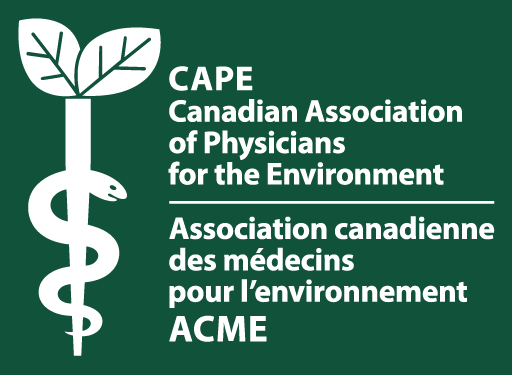The Oil and Gas Emissions Cap would mark a sea change in Canada’s approach to climate action by targeting the largest and fast-growing source of carbon pollution in the country. The Oil and Gas Emissions Cap would involve the development of a new cap-and-trade system under the Canadian Environmental Protection Act, 1999 or the modification of existing carbon pollution pricing systems under the Greenhouse Gas Pollution Pricing Act. Passing these regulations would reduce greenhouse gas emissions from the oil and gas sector to achieve Canada’s 2030 and 2050 climate targets,
As with the Clean Electricity Regulations, the Oil and Gas Emissions Cap is slated for debate, refinement and implementation over summer 2023, and will likely be adopted before the end of 2023.
Why do we need a cap on oil and gas pollution?
In March of 2022, the federal government’s Emissions Reduction Plan outlined an emissions cap for the oil and gas sector—Canada’s largest contributor to climate change causing emissions. In 2023, we await the first draft of the emissions cap regulations that will chart an emissions pathway for the oil and gas sector from now until 2030, with its sights set on net-zero by 2050.
This is a generational opportunity to address climate change, protect our health and prepare our economy for the future – and Canadians are in support. Recent polling by Abacus Data shows that Canadians are ready for the oil and gas sector to take action, specifically by addressing their climate change-causing emissions. A majority (58%) of Canadians agree that, “The emissions cap should ensure that Canada’s oil and gas industry takes on its fair share of the climate effort, both compared to other Canadian sectors and on a global level.”
The Oil and Gas Emissions Cap is important for our health
A strong oil and gas emissions cap is an essential step to support the health of people across Canada. Climate change has been called “the biggest health threat facing humanity” by the World Health Organisation, and affects human health at multiple levels. At the most basic, it leads to death and illness from extreme heat, drought, floods, disrupted food systems and increases in diseases. But because of its all-encompassing impacts, climate also affects the social determinants of health, such as social supports, access to jobs and access to health care. These costs are borne disproportionately by vulnerable and disadvantaged groups.
Beyond climate impacts, a strong oil and gas cap can address other sources of pollution that threaten our health. For example, the oil and gas sector is the largest industrial source of methane in Canada. Methane exacerbates the climate crisis and escalates deadly air pollution by emitting toxins such as nitrogen dioxides, creating particulate matter (PM2.5) and ozone. These are linked to asthma, other lung and heart diseases, stroke, dementia, hospitalizations, premature birth risks, and premature deaths.
Health impacts are associated with oil and gas production and use across Canada. In provinces like British Columbia, liquefied natural gas (LNG) is largely produced through hydraulic fracturing (“fracking”), which can leave behind toxic fracking wells, poison the surrounding environment, and imperil the lives of people living close to wells.
In Alberta, oil sands operations have been linked to health risks in areas close to operations and upgrading facilities, through pollutants in air, water and land such as polycyclic aromatic hydrocarbons (PAHs), various carcinogens and methylmercury. Health risks accompany various components of the oil sands supply chain, from air emissions during transport and loading, to oil spills, train derailments and railcar explosions.
What is the oil and gas industry’s fair share of emissions reductions?
In 2021, Canada updated its Nationally Determined Contribution under the Paris Agreement to a Canada-wide emissions reduction goal of 40-45% below 2005 levels by 2030.
Between 2005 and 2019, while non-oil and gas sectors decreased their GHG emissions by almost 7%, oil and gas emissions climbed by 19%. Oil and gas is now the fastest-growing and emitting sector of the Canadian economy. This sector should be held to the same targets as the rest of Canada’s economy.
MPs need to make the Oil and Gas Emissions Cap as strong as possible.
As with any major regulatory change, the Oil and Gas Emissions Cap is subject to intense pressure to weaken targets, allow exemptions and extensions, and embed loopholes for industry. It’s urgent that the CAPE community stand up to demand strong regulatory measures that tackle this important source of carbon pollution.
Among more detailed policy recommendations, CAPE is asking that the Oil and Gas Emissions Cap have the following features:
- A 45% reduction below 2005 greenhouse gas emission levels by 2030 – Emissions targets for the oil and gas industry should match the targets for the Canadian economy as a whole.
- No timeline flexibility – The oil and gas sector must make reductions within the 2030 time frame and not beyond it.
- No loopholes – There must be consequences for non-compliance with emissions cap targets. Any nature-based offsets must be made in compliance with a regulated offset market, the cap must apply to all oil and gas facilities in Canada, and the cap must contain no additional carbon capture and storage investments.
Links:
